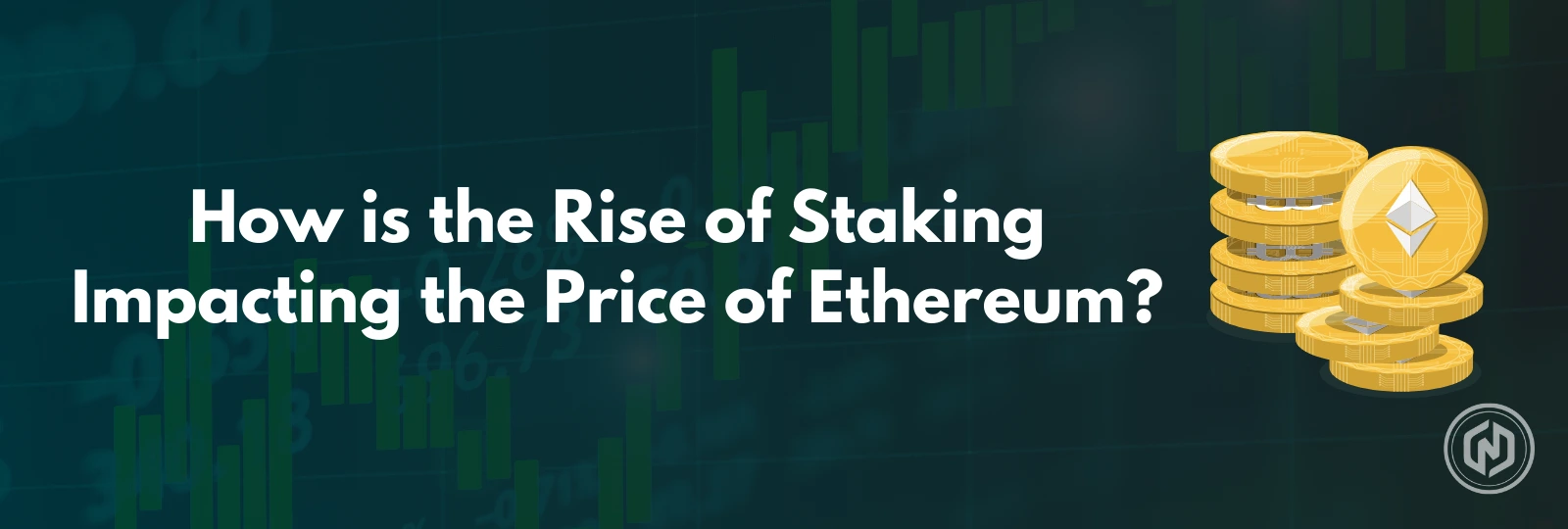Ethereum is a popular blockchain platform that powers smart contracts and decentralized apps (dApps). Ethereum 2.0 allows Ethereum staking by switching from Proof of Work (PoW) to Proof of Stake (PoS). In this framework, users who promote network security by locking up ETH are rewarded. The switch to PoS enhances scalability and solves energy-related issues. Since Ethereum is still developing, the increase in staking has increased demand, which has a favorable impact on the market price and suggests potential for long-term price growth. This article will provide deeper insights into the effects of Ethereum staking as well as the future of cryptocurrency.
Rise of Ethereum Staking
Since the switch to Ethereum 2.0 and the implementation of the Proof of Stake (PoS) paradigm, Ethereum staking platforms have become much more popular. Through staking, ETH holders may take part in the operations and security of the network by locking up their tokens in return for incentives such as ETH staking rewards. There are now about 26 million ETH staked, or about 28.9% of total ETH. An increasing number of staking platforms and greater user adoption are to blame for this surge since they have made the procedure easier for players.
Due to the attractive ETH staking payouts in 2024, more users are choosing to stake their ETH. The rise in stakeholder participation has also been attributed to the availability of several centralized and decentralized staking services.
Impact of ETH Staking on its Market Price
Staking on Ethereum has had a major impact of staking on ETH price by limiting its supply and decreasing its circulating liquidity. A decrease in the market’s liquid supply has been seen as staking forces users to lock up their ETH to get rewards. Generally speaking, this drop in ETH circulation reduces sell pressure, which might stabilize or even increase ETH prices as a result of scarcity effects.
Long-term holding is encouraged by the staking incentives, which range from around 3-8% yearly as players look for consistent earnings. This encourages more investors to retain rather than trade, which may eventually help to maintain the ETH market price stable. Smaller market events may result in more noticeable price swings, as staking systems such as StakingFarm demonstrate how less liquidity affects price volatility.
Smaller market events may result in more noticeable price swings as there will be less ETH available for trade. Therefore, the total impact of staking on the price of Ethereum depends on how Ethereum staking rewards affect investor behavior and network involvement, reducing the price’s sensitivity to market shocks and generating price growth chances.
Ethereum’s Future Price Outlook
Enhancements in scalability, higher stakes, and changing legal environments are some of the variables that will influence ETH price predictions in the future. Scarcity might push prices higher, especially as stake payments incentivize long-term holding since more than 25% of Ethereum’s supply is currently staked. According to analysts, Ethereum may average between $3000 and $7000 in 2025, with possible peaks of $10,000 by 2030.
Concerns about the network’s scalability persist as it faces competition from faster transaction options like Solana and Cardano. Changes in regulations, particularly those about exchange-traded funds (ETFs), may potentially have an ETH price impact.
Conclusion
Ethereum staking has a complex effect on Ethereum’s price since it improves the network’s scalability, increases its security, and stabilizes the amount of ETH in circulation. These factors will have a positive effect on the price of ETH. Ethereum is continuously locked away as staking becomes more accessible through services like Lido and Rocket Pool, which reduces the amount of Ethereum available on exchanges.

